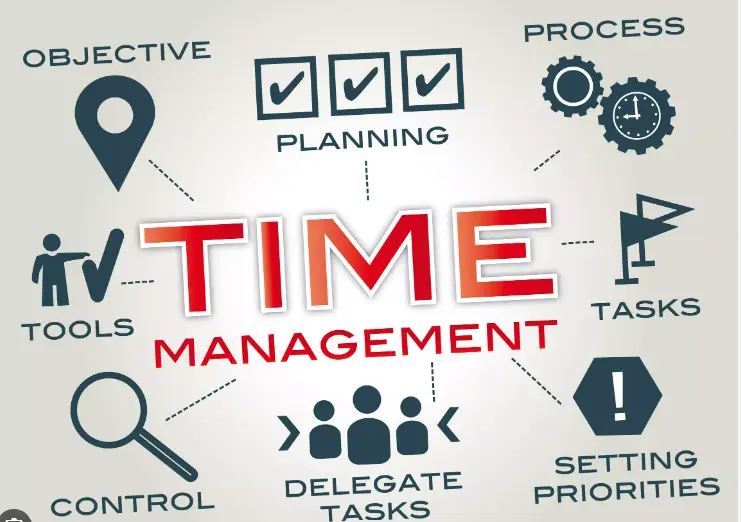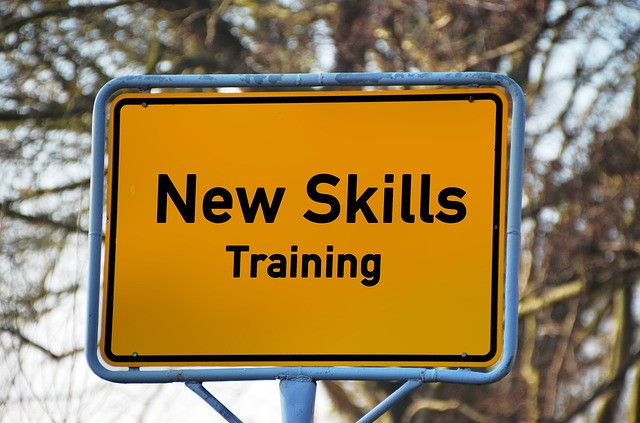If you’re a freelancer, you already know how tricky it can be to stay on top of projects, deadlines, and personal commitments — all without a traditional 9-to-5 schedule to guide you. That freedom is great, but it also means you have to be your own time manager.
Learning how to manage your time as a freelancer is the key to avoiding burnout, keeping clients happy, and actually enjoying your work. It’s about setting clear priorities, building a realistic routine, and making sure you separate work from your personal life.
Whether you’re new to freelancing or have years of experience, improving your time management skills can help you stay productive, meet your goals, and maintain a healthier work-life balance.
How to Manage your time as a freelancer
In this guide, I’ll share practical strategies on how to manage your time as a freelancer — from setting boundaries to using simple productivity tools — so you can stay focused and thrive in your freelance career.
1. Set goals and prioritize your freelance tasks
Setting goals and prioritizing tasks are essential steps in how to manage your time as a freelancer. Key steps that must be taken seriously to ensure that you’re achieving your objectives and maximizing your potential.
Define your goals: The first step is to define your goals. You need to know what you want to achieve, and set specific, measurable, achievable, relevant, and time-bound (SMART) goals. For instance, if you’re a freelance writer, your goal might be to write 3 articles a week, each containing at least 1000 words.
Break down your goals into tasks: Once you have defined your goals, break them down into smaller tasks that you can accomplish more easily. This step helps you to focus on the smaller steps required to achieve your larger goals. For example, if your goal is to write 3 articles a week, your tasks could include conducting research, drafting outlines, and writing drafts.
Prioritize your tasks: After breaking down your goals into smaller tasks, you need to prioritize them. Prioritizing helps you to identify the most important and urgent tasks that require immediate attention. You can use tools such as the Eisenhower matrix to prioritize your tasks based on their urgency and importance.
Assign deadlines: Assigning deadlines to your tasks is crucial to ensure that you’re meeting your goals. When setting deadlines, make sure they’re realistic and achievable. This step helps you to stay on track and accountable for completing your tasks on time.
Review and adjust: Finally, it’s important to regularly review your progress and adjust your goals and tasks as needed. This step helps you to stay flexible and adapt to changing circumstances. Review your progress weekly or monthly and adjust your goals or tasks if necessary.
2. Use a calendar or a freelancer scheduling tool
Using a calendar or a freelancer scheduling tool is a game-changer when it comes to how to manage your time as a freelancer. Moreover, by visually organizing your tasks and deadlines, you can see what needs to be done and when, helping you avoid last-minute rushes and missed deadlines.
By the way, if you prefer another option, you can use a freelancer scheduling tool such as Trello, Asana, or Monday.com. These tools are designed specifically for freelancers and can help you to manage your projects, track your progress, and collaborate with clients and team members.
Also, they typically offer features such as task lists, deadlines, calendars, and project management tools, making it easier to stay organized and on top of your workload.
Using a calendar or a freelancer scheduling tool can be especially helpful when you have multiple clients and projects to manage.
3. Create your own freelance routine
Establish a routine that works for you, and stick to it. This will help you create structure and maintain productivity.
Creating a freelance routine is essential for staying productive and achieving your goals as a freelancer.
Here’s an example of a routine that you can adapt and customize to fit your own needs and preferences:
- Morning Routine:
- Wake up at a consistent time every day
- Get dressed and prepare breakfast
- Check your email for urgent messages
- Review your to-do list for the day
- Work Routine:
- Start with the most important or urgent tasks first
- Set aside specific blocks of time for each task
- Take short breaks every hour or two to avoid burnout
- Stay focused and minimize distractions (e.g. turn off notifications, close unnecessary tabs)
- Afternoon Routine:
- Take a lunch break and eat something healthy
- Review your progress and adjust your tasks if necessary
- Attend to any urgent emails or messages that have come in
- Evening Routine:
- Wrap up your work for the day and check off completed tasks
- Reflect on your accomplishments and plan for the next day
- Take some time for yourself to relax or engage in a hobby
- Disconnect from work and enjoy your evening
Remember, the key to a successful freelance routine is to find what works best for you. Also, experiment with different work hours and task sequences to find what works best for you in how to manage your time as a freelancer. And make adjustments as necessary to stay productive and motivated.
4. Minimize Distractions to your freelance work
As a freelancer, it’s important to minimize distractions to maximize productivity and focus on your work. Ultimately, this will help you stay focused and get your work done faster.
Here are some tips to help you minimize distractions:
- Create a dedicated workspace: Set up a workspace that’s free from distractions, such as a separate room or a quiet corner of your home. Make sure your workspace is organized and comfortable, with a comfortable chair and good lighting.
- Turn off notifications: Turn off notifications on your phone, computer, and other devices to minimize distractions from social media, emails, and other apps. Consider using apps such as Freedom or Cold Turkey to block distracting websites and apps during work hours.
- Use noise-cancelling headphones: Noise-cancelling headphones can help block out distractions from noise and conversations around you. Play music or white noise to help you focus and stay in the zone.
- Stick to a schedule: Establish a schedule that works for you and stick to it as much as possible. This can help you stay focused and minimize distractions by creating a routine and structure to your day.
- Take breaks: Take regular breaks to avoid burnout and refresh your mind. Use this time to stretch, walk around, or do something that relaxes you.
- Set boundaries: Set clear boundaries with family, friends, and clients to avoid interruptions during work hours. Let them know your work hours and ask them to respect your schedule.
5. Take breaks from all freelance activities
Take regular breaks to avoid burnout and increase your productivity. Actually, you can use the Pomodoro technique, which involves working for 25 minutes, taking a five-minute break, and repeating the cycle.
Here are some tips to help you take breaks from all freelance activities:
- Schedule breaks into your day: Plan breaks into your schedule and stick to them. Whether it’s a short break to stretch or a longer break to recharge, make sure you take time away from work activities to rest and recharge.
- Get up and move: Physical activity can help you clear your mind and reduce stress. Take a walk, do some stretching, or engage in another physical activity that you enjoy.
- Disconnect from technology: Disconnecting from technology can help you recharge and reduce stress. Turn off your phone, computer, and other devices and engage in activities that don’t involve screens, such as reading a book or spending time outdoors.
- Spend time with friends and family: Spending time with loved ones can be a great way to take a break from work activities and reduce stress. Make time for social activities and connect with friends and family on a regular basis.
- Pursue hobbies or interests: Engaging in hobbies or interests outside of work can help you relax and recharge. Whether it’s painting, playing music, or gardening, find activities that you enjoy and make time for them.
6. Delegate some freelance tasks
Delegating freelance tasks is an effective way to free up time and focus on your core skills and responsibilities.
Here are some tips to help you delegate freelance tasks:
- Identify tasks that can be delegated: Make a list of all the tasks that you currently perform as a freelancer. Identify tasks that can be delegated, such as administrative tasks, social media management, or graphic design.
- Find the right person: Find someone who has the skills and experience needed to perform the task. Consider hiring a virtual assistant, working with a freelance specialist or outsourcing the task to a reliable company.
- Communicate clearly: When delegating tasks, it’s important to communicate clearly about what you need and how you want the task to be completed. Provide clear instructions and set expectations for timelines and deliverables.
- Provide necessary resources: Provide the necessary resources and tools to complete the task, such as access to software, files or other materials needed for the task.
- Set milestones and check-ins: Set milestones and check-ins to ensure the task is on track and that you are satisfied with the progress. This also helps to keep everyone accountable and ensures that the task is completed in a timely manner.

7. Set boundaries for delivering your freelance work
Firstly, set boundaries with your clients, such as your working hours, response time, and availability. In fact, this will help you manage your clients’ expectations and prevent you from overworking.
Here are some tips to help you set boundaries for delivering your freelance work:
- Be clear about your availability: Let your clients know when you’re available to work and when you’re not. This can include setting regular work hours, specifying your response time for emails, and communicating any days or times when you won’t be available.
- Set realistic deadlines: Set realistic deadlines for your work and communicate them clearly to your clients. Make sure that your deadlines allow you enough time to complete your work to the best of your ability, while also allowing for any unexpected delays or setbacks.
- Communicate any changes in availability: If your availability changes, make sure to communicate this to your clients as soon as possible. This can include changes to your work hours, upcoming vacations or other personal commitments that may affect your ability to deliver work on time.
- Prioritize your workload: Set boundaries around the number of projects you take on at one time, and prioritize your workload to ensure that you’re delivering high-quality work on time. Don’t take on more work than you can handle, and make sure that you’re able to deliver each project to the best of your ability.
- Manage client expectations: Make sure that your clients understand what they can expect from you, including the scope of your work, the timeline for completion, and the quality of work that you’ll deliver. Communicate any changes or updates to your clients as soon as possible to ensure that they’re informed and satisfied with your work.
Related Articles
How to Price your Services as a Freelancer
The Best Ways To Communicate Effectively As A Freelancer
My Final Thought
Learning how to manage your time as a freelancer is crucial for productivity and work-life balance. By setting routines, prioritizing tasks, and using tools like calendars, freelancers enhance workflow and meet deadlines.
Interestingly, this structured approach ensures efficiency and long-term success in freelancing. Furthermore, implement these strategies to excel in time management and work-life balance.








